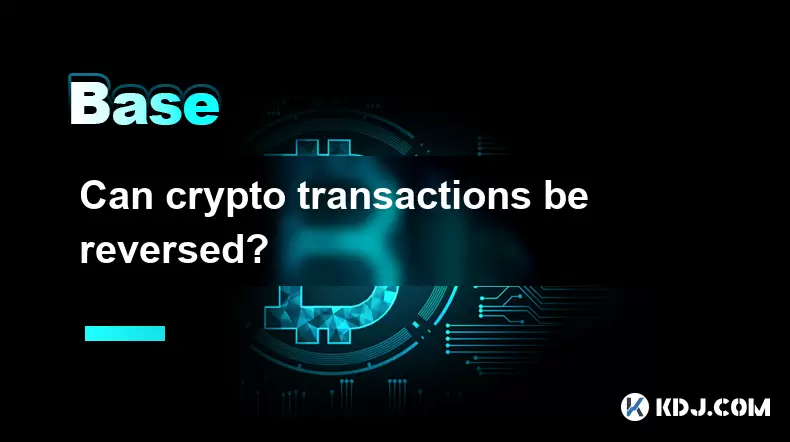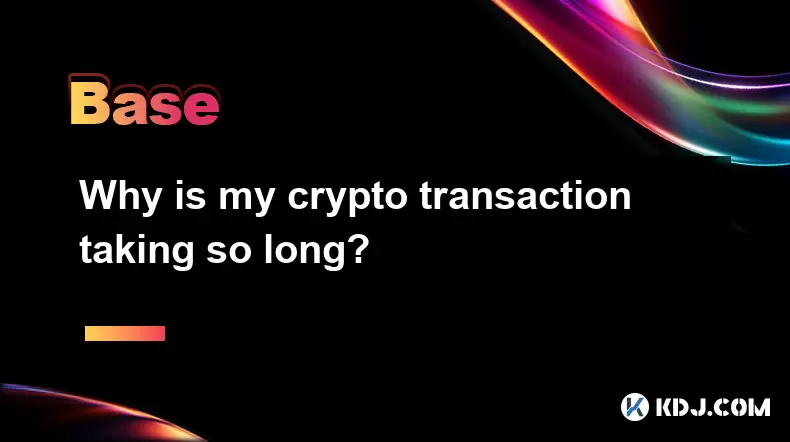-
 Bitcoin
Bitcoin $120300
1.24% -
 Ethereum
Ethereum $4311
2.06% -
 XRP
XRP $3.197
0.16% -
 Tether USDt
Tether USDt $1.000
0.01% -
 BNB
BNB $805.1
0.34% -
 Solana
Solana $179.6
-1.14% -
 USDC
USDC $0.9998
0.00% -
 Dogecoin
Dogecoin $0.2303
-1.21% -
 TRON
TRON $0.3442
1.08% -
 Cardano
Cardano $0.7938
-1.23% -
 Hyperliquid
Hyperliquid $44.55
-0.69% -
 Chainlink
Chainlink $21.81
-2.59% -
 Stellar
Stellar $0.4436
0.05% -
 Sui
Sui $3.728
-3.42% -
 Bitcoin Cash
Bitcoin Cash $586.5
2.00% -
 Hedera
Hedera $0.2530
-2.62% -
 Ethena USDe
Ethena USDe $1.001
-0.02% -
 Avalanche
Avalanche $23.65
-1.46% -
 Litecoin
Litecoin $124.5
-0.71% -
 Toncoin
Toncoin $3.384
1.63% -
 UNUS SED LEO
UNUS SED LEO $9.001
-0.44% -
 Shiba Inu
Shiba Inu $0.00001321
-2.42% -
 Uniswap
Uniswap $10.87
-2.31% -
 Polkadot
Polkadot $3.956
-2.80% -
 Cronos
Cronos $0.1681
4.79% -
 Dai
Dai $1.000
-0.01% -
 Ethena
Ethena $0.8090
1.30% -
 Bitget Token
Bitget Token $4.425
-0.55% -
 Monero
Monero $272.6
3.08% -
 Pepe
Pepe $0.00001169
-2.54%
How to stake cryptocurrency?
Staking crypto involves locking coins in a proof-of-stake network to earn rewards, but carries risks like price volatility, slashing, and lock-up periods.
Aug 11, 2025 at 09:14 pm

Understanding Cryptocurrency Staking
Staking cryptocurrency refers to the process of actively participating in a proof-of-stake (PoS) blockchain network by locking up a certain amount of digital assets to support operations such as transaction validation, security, and network consensus. Unlike proof-of-work systems that rely on mining, PoS blockchains use staking to determine who gets to validate the next block. When you stake your coins, you essentially pledge them as collateral to be eligible for rewards. These rewards are typically distributed in the form of additional cryptocurrency tokens. The more coins you stake and the longer you keep them staked, the higher your chances of earning rewards.
It is crucial to understand that not all cryptocurrencies support staking. Only those built on PoS or delegated proof-of-stake (DPoS) consensus mechanisms allow staking. Examples include Ethereum (post-Merge upgrade), Cardano (ADA), Solana (SOL), and Polkadot (DOT). Before initiating the staking process, confirm whether your chosen cryptocurrency operates on a staking-compatible blockchain. You can verify this by visiting the official website of the cryptocurrency or checking trusted blockchain data platforms like CoinMarketCap or CoinGecko.
Choosing a Staking-Compatible Wallet
To begin staking, you must store your cryptocurrency in a wallet that supports staking functions. Wallets fall into two main categories: hardware wallets and software wallets. Hardware wallets such as Ledger or Trezor offer enhanced security by storing private keys offline, while software wallets like Trust Wallet, MetaMask (for Ethereum staking), or the official wallets provided by blockchain projects (e.g., Daedalus for Cardano) offer user-friendly interfaces.
When selecting a wallet, ensure it explicitly supports staking for your chosen cryptocurrency. For instance, to stake Ethereum (ETH), you can use the official staking dapp on the Ethereum website or connect MetaMask to a staking service. For Cardano, the Daedalus or Yoroi wallets are recommended. Always download wallets from official sources to avoid phishing scams. After installation, transfer your coins from an exchange or another wallet into your staking-compatible wallet. This transfer must be completed before proceeding to the next steps.
Direct vs. Exchange-Based Staking
There are two primary methods to stake cryptocurrency: direct staking and exchange-based staking. Direct staking involves using your personal wallet to participate in the network’s consensus mechanism. This method offers greater control over your assets and often provides higher transparency. However, it may require a minimum staking amount and technical setup. For example, becoming an Ethereum validator requires 32 ETH and running a validator node with specific hardware and internet requirements.
Exchange-based staking allows users to stake through centralized platforms like Binance, Coinbase, or Kraken. These exchanges handle the technical aspects and distribute staking rewards automatically. This option is ideal for beginners due to its simplicity. However, you do not hold custody of your private keys, which introduces counterparty risk. Rewards from exchange staking are usually slightly lower due to service fees. Evaluate the trade-offs between control, convenience, and security before choosing a method.
Step-by-Step Guide to Staking on a Wallet Interface
If you opt for direct staking via a wallet, follow these detailed steps:
- Open your staking-compatible wallet (e.g., Trust Wallet or Daedalus).
- Navigate to the staking section or "Earn" tab within the wallet interface.
- Select the cryptocurrency you wish to stake from your balance.
- Click on "Stake" or "Start Earning" and confirm the amount you want to lock.
- Review the staking terms, including lock-up periods, reward frequency, and penalties for early withdrawal.
- Confirm the transaction using your wallet’s authentication method (PIN, biometrics, or seed phrase).
- Wait for network confirmation. Once confirmed, your coins are officially staked.
Some wallets may require delegation if you’re not running a validator node. In such cases, you’ll need to choose a validator or staking pool. Research the pool’s performance, commission rate, and uptime before delegating. Poorly performing pools may reduce your rewards. After delegation, rewards are typically distributed periodically—daily, weekly, or per epoch—depending on the blockchain.
Understanding Risks and Reward Mechanics
While staking can generate passive income, it is not without risks. One major consideration is price volatility. Even if your staked tokens earn rewards, a decline in the cryptocurrency’s market value can result in a net loss. Another risk is slashing, where a portion of your staked assets is forfeited due to malicious behavior or prolonged downtime if you’re running a validator.
Lock-up periods also affect liquidity. Some staking protocols enforce mandatory unstaking periods, during which you cannot access your funds. For example, unstaking Ethereum may require waiting through a queue that could last days or weeks. Additionally, rewards are often subject to network inflation rates and the total amount of staked tokens—higher participation can reduce individual reward percentages.
Reward calculations vary by network. They are typically expressed as an annual percentage yield (APY). This rate is not guaranteed and fluctuates based on network conditions. Always check the current APY on official blockchain explorers or staking dashboards before committing funds.
Monitoring and Managing Your Staked Assets
After staking, actively monitor your staked balance and reward accrual. Most wallets provide a dashboard showing your current stake, accumulated rewards, and next payout date. Use blockchain explorers like Etherscan for Ethereum or CardanoScan for ADA to verify transactions and staking status independently.
To withdraw or unstake, locate the "Unstake" or "Withdraw Rewards" option in your wallet. Withdrawing rewards does not affect your principal stake, but unstaking removes your tokens from the validation pool. Be aware of cooldown periods. After initiating unstaking, funds may remain locked for a set number of blocks or days before becoming transferable.
Regularly update your wallet software to ensure compatibility with network upgrades. Enable notifications for reward distribution and validator status changes. If you’re delegating to a staking pool, reassess its performance every few months and consider switching pools if necessary to maximize returns.
Frequently Asked Questions
Can I lose money by staking cryptocurrency?
Yes, you can incur losses if the market price of the staked cryptocurrency drops significantly during the staking period. Additionally, slashing penalties may apply if you run a validator node and fail to meet protocol requirements.
Do I need technical knowledge to stake?
Not necessarily. Exchange-based staking requires minimal technical input. However, direct staking, especially as a validator, demands understanding of blockchain mechanics, secure key management, and possibly running dedicated hardware.
Are staking rewards taxable?
In many jurisdictions, staking rewards are considered taxable income at the time they are received. Consult a tax professional to understand reporting obligations based on your location.
What happens if I unstake early?
Early unstaking may trigger penalties or forfeit accrued rewards, depending on the network. Some blockchains enforce mandatory cooldown periods, during which your funds are inaccessible.
Disclaimer:info@kdj.com
The information provided is not trading advice. kdj.com does not assume any responsibility for any investments made based on the information provided in this article. Cryptocurrencies are highly volatile and it is highly recommended that you invest with caution after thorough research!
If you believe that the content used on this website infringes your copyright, please contact us immediately (info@kdj.com) and we will delete it promptly.
- Token Security, Agentic AI, Cybersecurity Guide: Navigating the New Frontier
- 2025-08-11 23:00:12
- Crypto Investments: Riding the Meme Wave with Layer Brett and Dogecoin
- 2025-08-11 23:00:12
- Nexchain, Crypto Presales, and Bitcoin Volumes: What's the Buzz?
- 2025-08-11 23:10:13
- Ethereum Treasury, Bitcoin, and Michael Saylor: A NYC Take on the Crypto Landscape
- 2025-08-11 23:10:13
- Pumpfun vs. Pepe Dollar: The Meme Coin Arena Heats Up
- 2025-08-11 23:10:14
- Altcoins Primed for a Bull Run: Investment Gains in the Making
- 2025-08-11 23:10:14
Related knowledge

Can crypto transactions be reversed?
Aug 10,2025 at 01:35am
Understanding the Immutability of Blockchain TransactionsCryptocurrency transactions are built on blockchain technology, which is designed to be immut...

What happens if I forget my crypto wallet password?
Aug 09,2025 at 08:50am
Understanding the Role of a Crypto Wallet PasswordA crypto wallet password serves as a critical security layer that protects access to your digital as...

What is hot storage in crypto?
Aug 11,2025 at 07:08am
Understanding Hot Storage in CryptocurrencyHot storage refers to cryptocurrency wallets that are connected to the internet. Unlike cold storage soluti...

What is the best crypto portfolio tracker?
Aug 10,2025 at 05:08am
Understanding the Role of a Crypto Portfolio TrackerA crypto portfolio tracker is a digital tool designed to help investors monitor the performance of...

Why is my crypto transaction taking so long?
Aug 11,2025 at 11:35am
Understanding Blockchain Network CongestionWhen a crypto transaction is delayed, one of the most common causes is network congestion on the blockchain...

Can you reuse a crypto wallet address?
Aug 08,2025 at 03:49pm
Understanding Wallet Addresses in CryptocurrencyA crypto wallet address is a unique identifier used to send and receive digital assets on a blockchain...

Can crypto transactions be reversed?
Aug 10,2025 at 01:35am
Understanding the Immutability of Blockchain TransactionsCryptocurrency transactions are built on blockchain technology, which is designed to be immut...

What happens if I forget my crypto wallet password?
Aug 09,2025 at 08:50am
Understanding the Role of a Crypto Wallet PasswordA crypto wallet password serves as a critical security layer that protects access to your digital as...

What is hot storage in crypto?
Aug 11,2025 at 07:08am
Understanding Hot Storage in CryptocurrencyHot storage refers to cryptocurrency wallets that are connected to the internet. Unlike cold storage soluti...

What is the best crypto portfolio tracker?
Aug 10,2025 at 05:08am
Understanding the Role of a Crypto Portfolio TrackerA crypto portfolio tracker is a digital tool designed to help investors monitor the performance of...

Why is my crypto transaction taking so long?
Aug 11,2025 at 11:35am
Understanding Blockchain Network CongestionWhen a crypto transaction is delayed, one of the most common causes is network congestion on the blockchain...

Can you reuse a crypto wallet address?
Aug 08,2025 at 03:49pm
Understanding Wallet Addresses in CryptocurrencyA crypto wallet address is a unique identifier used to send and receive digital assets on a blockchain...
See all articles

























































































